How to Cook Pasta
The smell of a delicious sauce simmering. That’s pure comfort. The anticipation of twirling long strands of spaghetti. What a feeling! Pasta isn’t just food; it’s an experience. It brings families together, makes for quick weeknight meals, and is a beloved dish across the USA and beyond.
You might think cooking pasta is easy. Just boil water, right? Think again. There are a few simple secrets. These secrets can take your pasta from “just okay” to “absolutely amazing.” No fancy chef skills needed. You can do this!
In this guide, we’re going to break down exactly how to cook pasta like a pro. We’ll cover everything. Your tools. Each simple step. Common mistakes? We’ll fix them. Plus, a few extra tips to make your pasta dishes truly shine. This isn’t just a recipe. It’s a deep dive. Get ready to impress yourself and everyone at your table with perfect pasta, every single time!

Section 1: Getting Ready – Your Pasta Prep Checklist
Alright, kitchen warriors! Before we even touch a single noodle, let’s gear up. Think of it like preparing for a fun adventure. You need the right stuff. Having everything ready? Total game-changer. Makes cooking smooth. Stress-free.
1. The Right Pot: Size Matters! Seriously.
Any pot will do, you think? Wrong. For pasta, a big pot is your best friend. A true buddy.
Why a Big Pot?
Pasta needs space. Lots of room. It swells. It expands. If your pot is too small, the pasta clumps. It sticks. Uneven cooking. Imagine trying to swim in a kiddie pool. Not comfy. A big pot lets pasta swim freely. Moves around. Each piece cooks just right.
What Size?
For a standard 1-pound box of pasta (serves 4-6), grab a pot holding at least 6 to 8 quarts. That’s about 1.5 to 2 gallons of water. Cooking for a crowd? Go even bigger! Always choose larger. Never too small.

2. Plenty of Water! Always.
Obvious, right? Maybe. But using enough water? Super important for perfect pasta. Listen up.
How Much?
For every pound of dry pasta, use at least 4 to 6 quarts of water. Yes, that much.
Why So Much Water?
Steady Temperature: You add cold pasta to hot water. Water temp drops. If not enough water, the temperature drops too much. Gummy pasta. Sticky pasta. Lots of water helps. Temp bounces back fast.
Prevents Sticking: More water. More space. Pasta moves. No sticking. Simple.

3. The Magic Ingredient: Salt! Don’t Forget It.
This is the biggest secret. Seriously. Don’t skip it. Don’t be shy.
Why Salt?
Pasta is bland. A blank canvas. Your only chance to flavor it? The cooking water. If your water isn’t salty enough, pasta tastes flat, even with amazing sauce. Trust me on this.
How Much?
A solid rule: *1 to 2 tablespoons of salt per gallon of water. Yeah, that much! It should taste salty like the ocean. Don’t worry. Pasta won’t soak it all up. Just enough. Delicious.
What Kind?
Regular table salt works. But Kosher salt or sea salt? Many cooks prefer them. Easy to dissolve.]
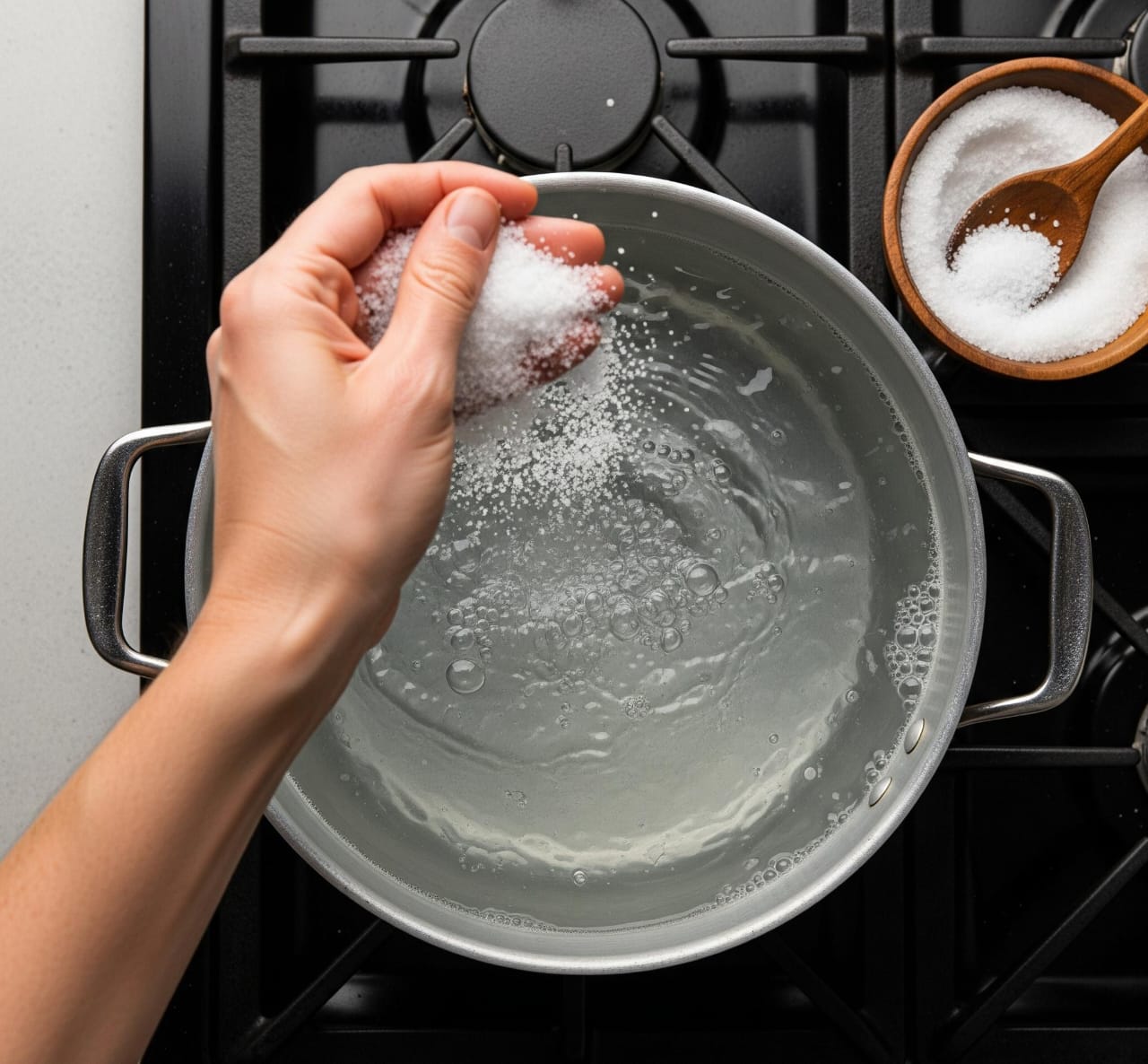
4. Your Trusty Tools: Get ‘Em Ready.
- Colander: Must-have. For draining.
- Long Tongs or a Sturdy Stirring Spoon: For stirring. For testing.
- Timer: Your best friend. No mushy pasta. Ever.
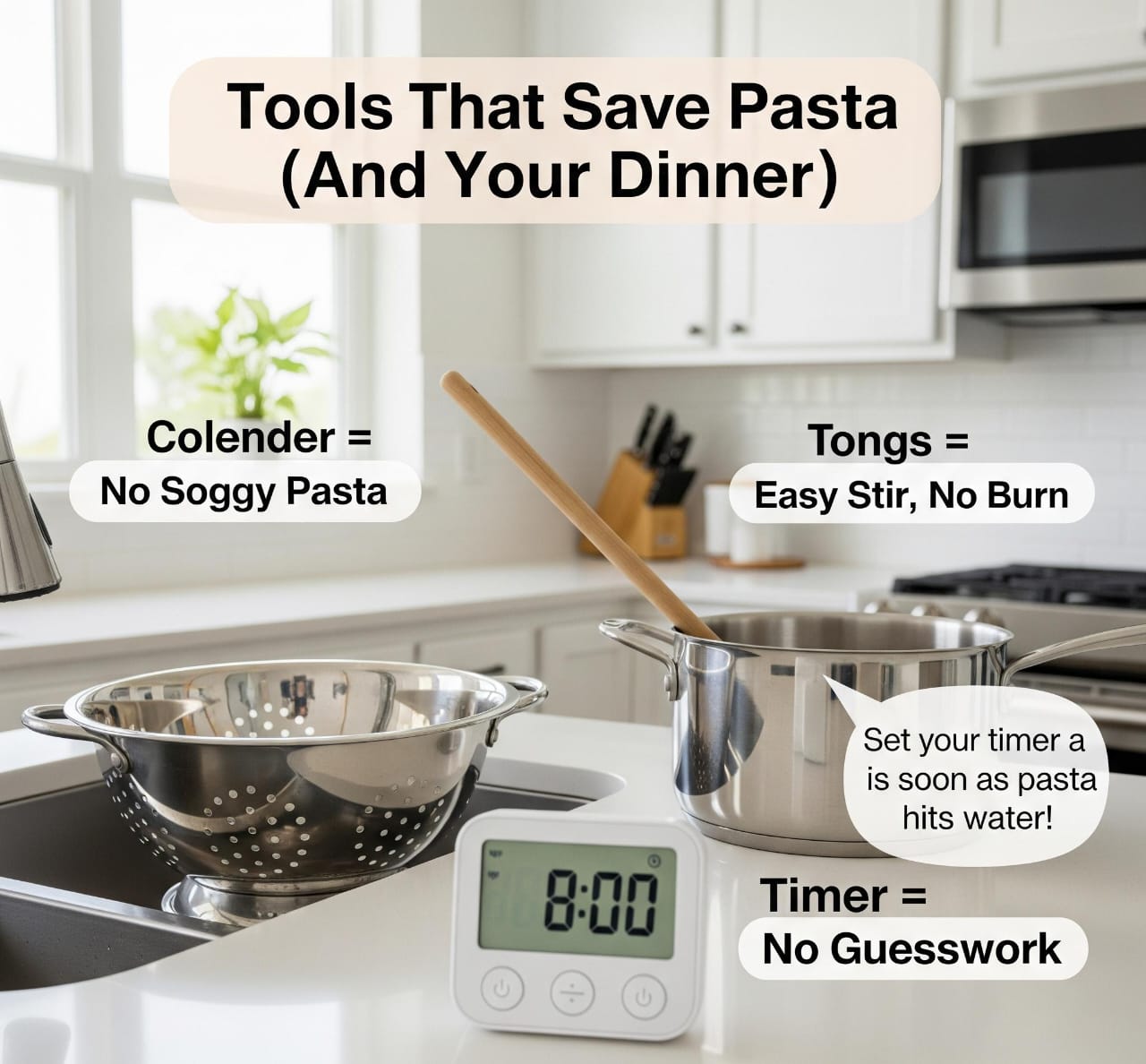
Section 2: Choosing Your Pasta – Shapes and Sauces
Before the stove even warms up, you gotta pick your pasta. What a world of shapes! Each has its own vibe. It’s own perfect sauce partner.
Dry Pasta vs. Fresh Pasta: The Lowdown.
Dry Pasta: This is your everyday hero. Boxes. Bags. Made from special wheat, water, and then dried. Sturdy. Great bite. Takes longer to cook. Awesome for hearty, chunky sauces. Lasts a while.
Fresh Pasta: In the fridge section. Made with flour and eggs. Softer. Cooks fast. Like, really fast. Best with lighter, creamy sauces. We’ll focus on dry here. Most common.
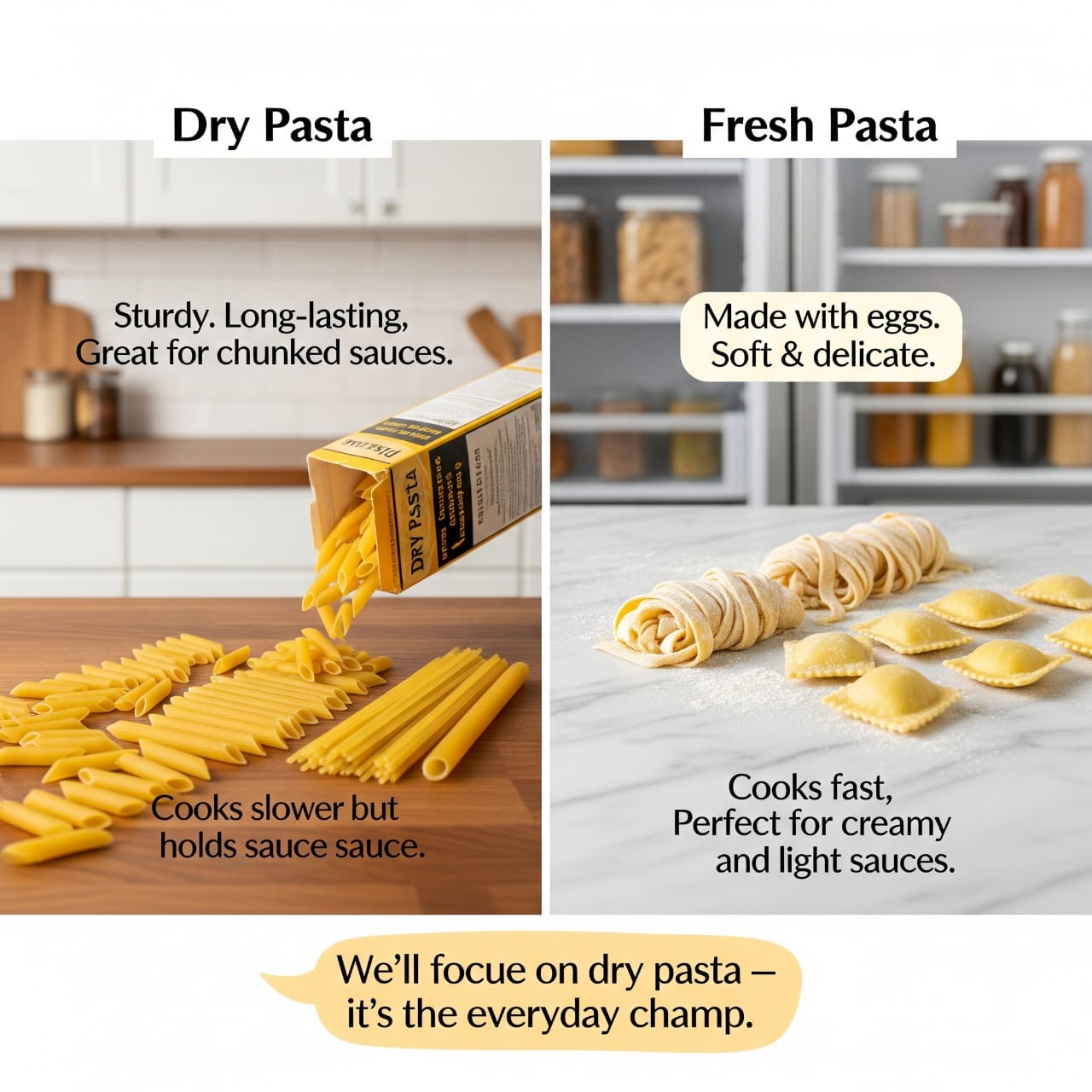
Why Does Pasta Shape Matter? This is Key.
It’s not just for looks! The shape of your pasta is designed. Designed to hold sauce. To deliver flavor. Think about it. You wouldn’t use a tiny spoon for soup, right? No! You’d use a big one. Same concept.
- Long Pasta (Spaghetti, Linguine, Fettuccine): The twirlers! Thin. Round. Perfect for smooth sauces. Marinara. Pesto. Carbonara. Twirl. Coat. Delicious.
- Tubular or Rigged Pasta (Penne, Rigatoni, Ziti): The holders! Holes. Ridges. Fantastic. Traps chunky sauces. Meat sauce. Cheesy sauces. Baked dishes? Yes!
- Spiral or Twisted Pasta (Rotini, Fusilli): The trappers! Twists. Turns. Excellent. Catches creamy sauces. Veggie bits. Salad dressing.
- Small Shapes (Elbow Macaroni, Orzo): The mixers! Best for creamy mac and cheese. Soups. Stews.
So, when you pick your pasta, think about your sauce. This little trick? Makes a huge difference. Trust me.

Section 3: The Simple Steps to Perfectly Cooked Pasta
Alright, the main event! Here’s the secret. How to cook pasta perfectly. Easy-peasy steps. Foolproof.
Step 1: Boil That Water! Get It Roaring.
- Put on the stove. Water in the pot. Heat on high.
- Lid on for faster boil. But once it’s boiling, lid OFF. No boil-overs!
- Patience! A big pot takes time. Don’t rush it. Water needs to be bubbling. Strong. Otherwise, gummy pasta. No fun.
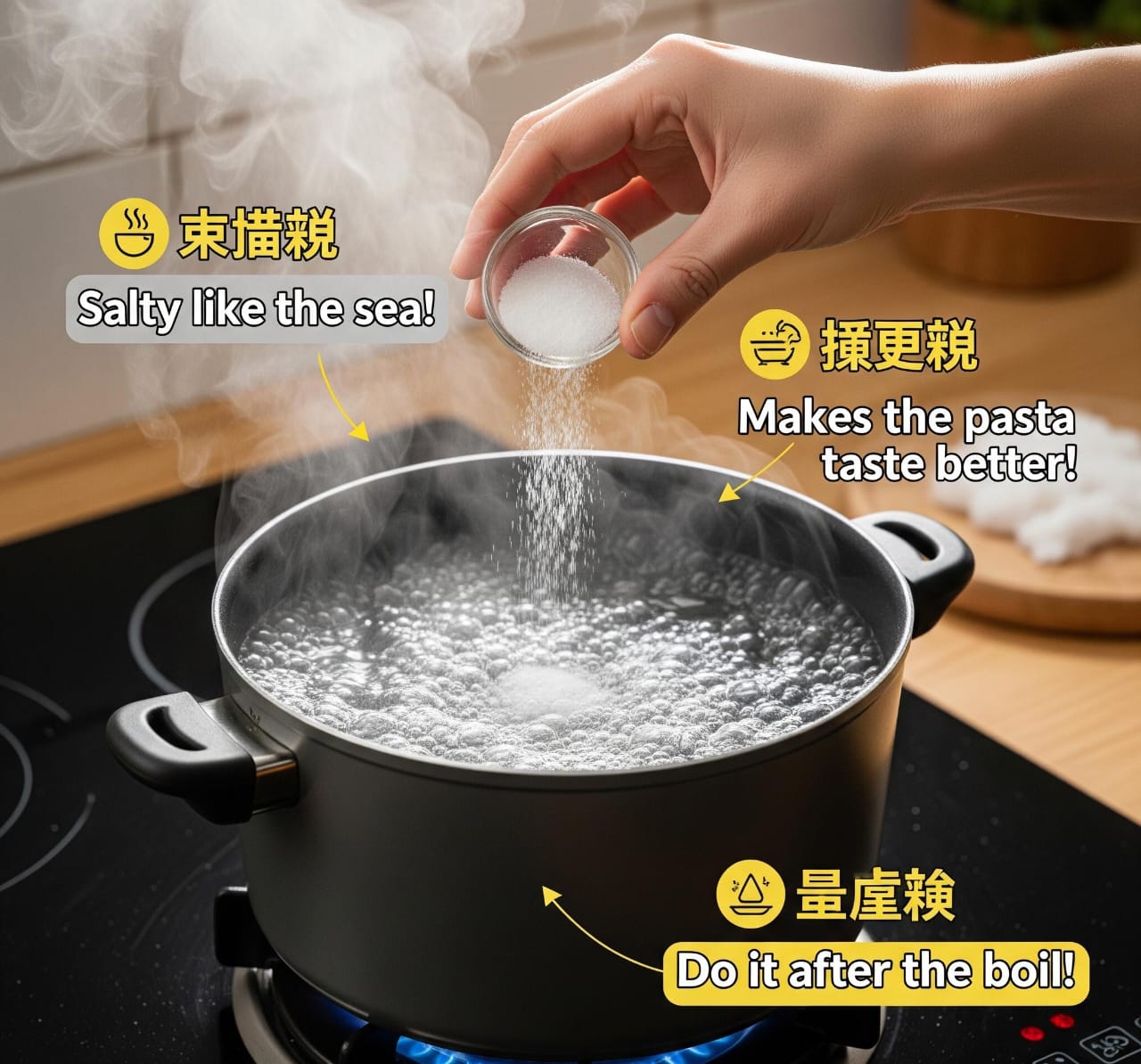
Step 2: Add the Salt! The Ocean Rule, Remember?
Water boiling strongly? Add that salt. 1-2 tablespoons per gallon. Stir. Done. This is your one chance. Flavor the pasta.
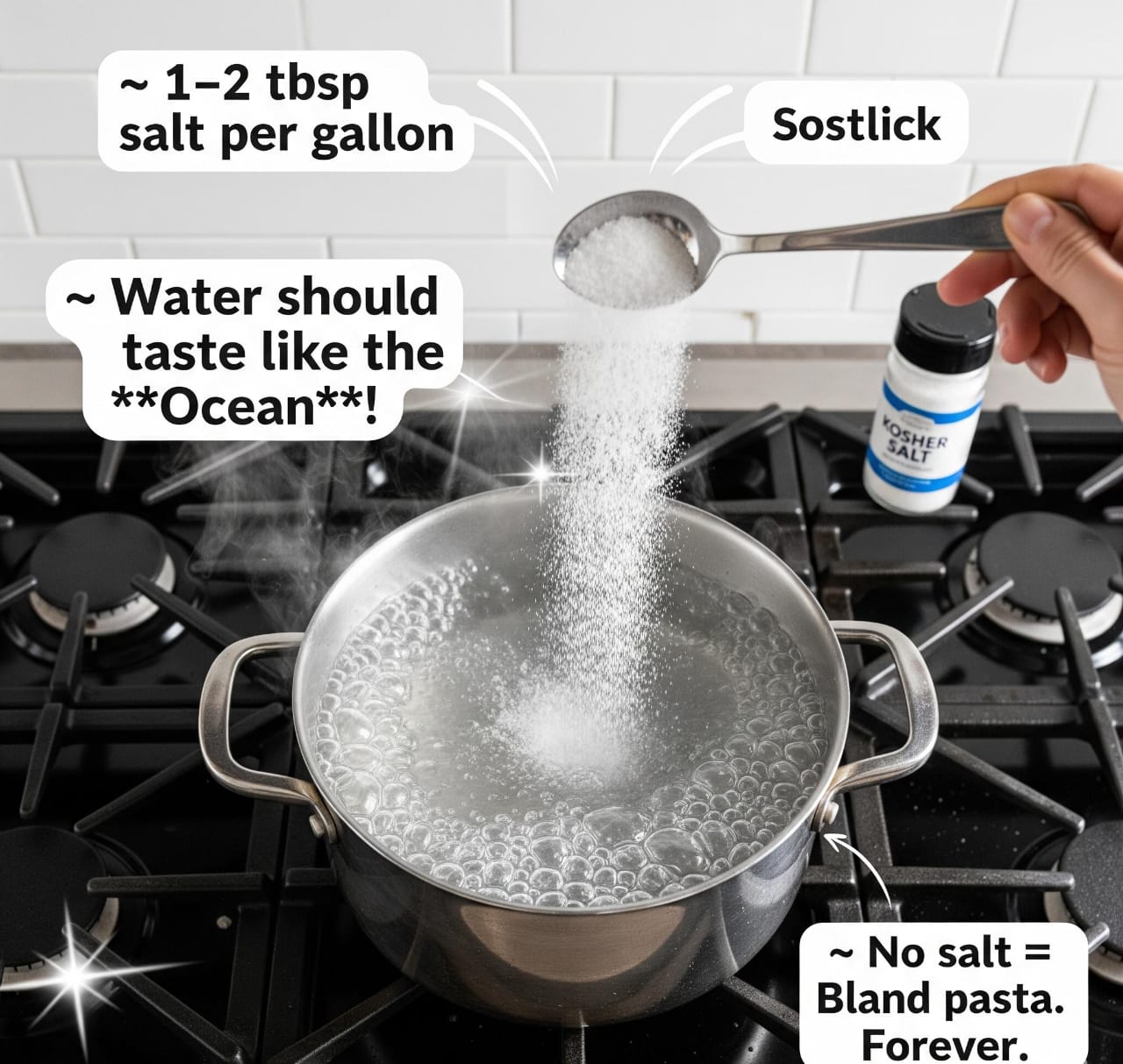
Step 3: Introduce the Pasta! Gently, Please.
- Is water roaring? Time for pasta.
- Long Pasta: Don’t break it! Push it down gently. It’ll soften. It’ll sink.
- Stir Right Away! Crucial. So important. Pasta goes in. Stir it! For the first minute or two. Stops clumps. Stops sticking.
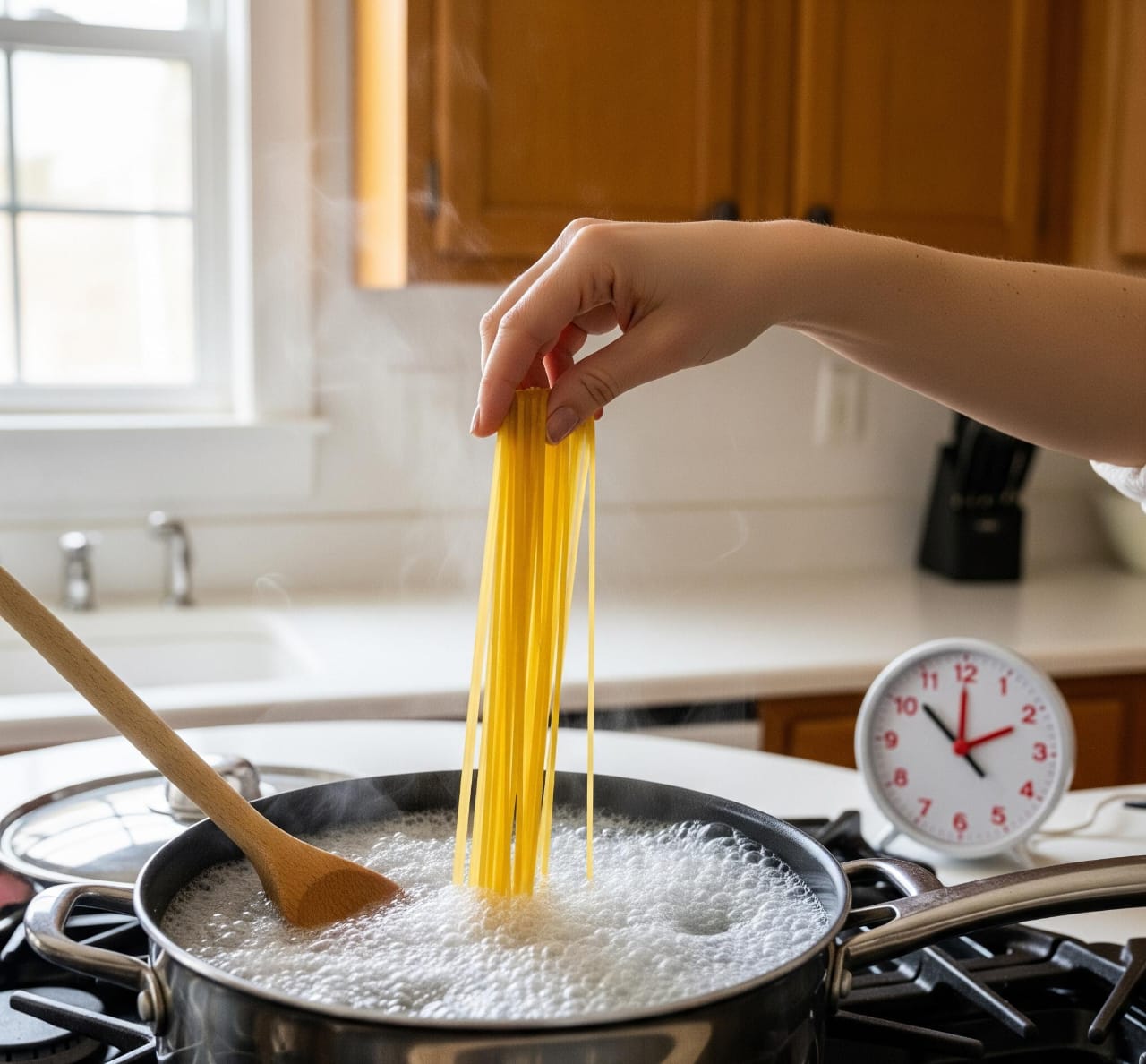
Step 4: Keep It Moving and Cooking.
- Keep a steady boil. Not too wild. Just steady.
- Stir occasionally. Every minute or two. Keeps pasta separate. Cooks evenly.
- Lid OFF! Seriously. Leave it off. Prevents big messes.
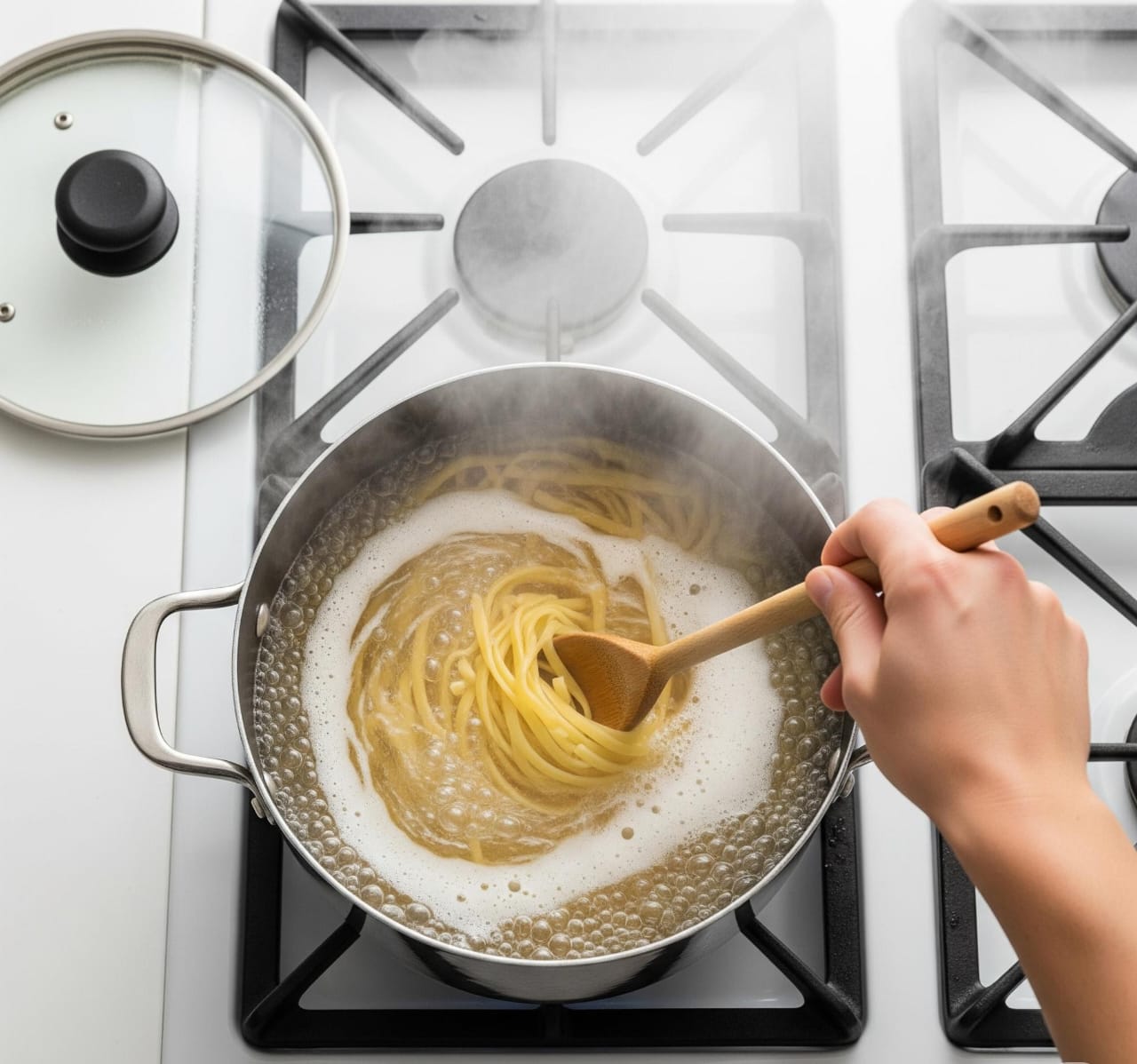
Step 5: The “Al Dente” Test – The Ultimate Secret!
“Al dente.” Means “to the tooth.” This is where you become a pasta master.
What it Means: Cooked through. But firm. A slight chew. Not mushy. Not soft.
How to Test:
1. Check Package: Look at the box. Suggested time. Your guide.
2. Test Early: About 1-2 minutes before the package time. Pull one piece out.
3. The Bite Test: Let it cool. Just a second. Bite it.
4. Perfect: Tender. Slight chew. Pleasant.
5. Underdone: Too firm. Crunchy. Chalky. Keep cooking!
6. Overdone: Soft. Mushy. Limp. Oops. Don’t worry. Learn from it.
7. Don’t Overcook! Seriously. It’s the biggest mistake. Mushy pasta is sad pasta. Better slightly under. It keeps cooking a little. Even after draining. Especially in hot sauce.

Step 6: The Golden Rule: Save Some Pasta Water! Don’t Skip This.
Chef’s secret. Game-changer for your sauce.
- Why Save Water? Starch. Released into water. Liquid gold.
- Thickens Sauce: Makes sauce cling. So good.
- Binds: Helps sauce and pasta “marry.” No separation.
- Loosens: Sauce too thick? Splash of water. Perfect.
- How Much? Before draining. Scoop out 1/2 to 1 cup. A mug. A ladle. Set aside. You might not use it all. But have it.
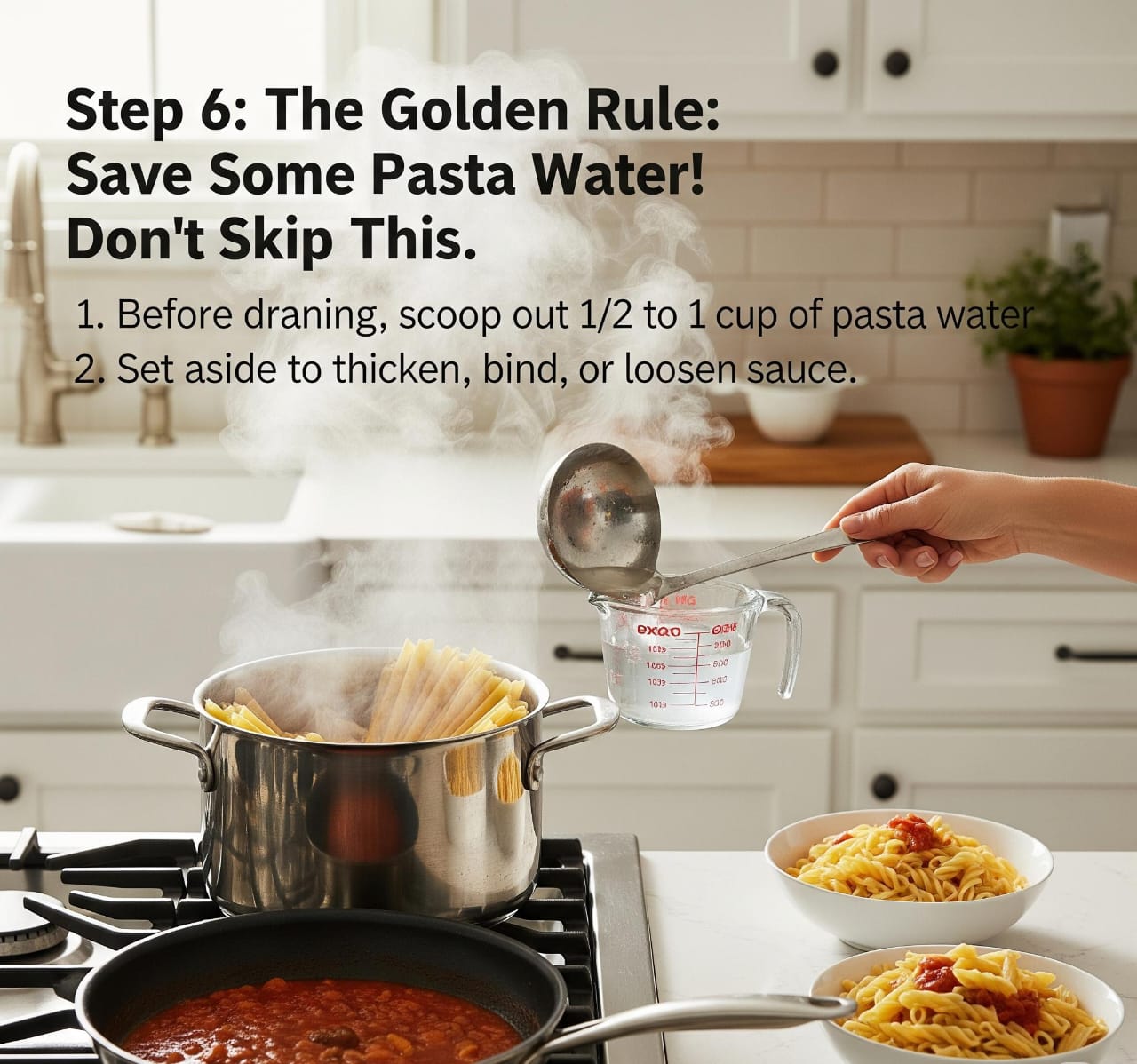
Step 7: Drain the Pasta! Quick, Quick!
- Pasta perfect? Heat off.
- Into the olander. In sink. Drain all water.
- Do NOT Rinse! (Unless for Cold Salad!)* Super important for hot dishes. Rinsing washes away starch. Sauce won’t stick. Pasta cools. Bad!
- ONLY Exception: Cold pasta salad. Then, yes. Rinse with cold water. Stop cooking. Cools down.
- Don’t Let it Sit: Drain fast. No clumping. No cooling.
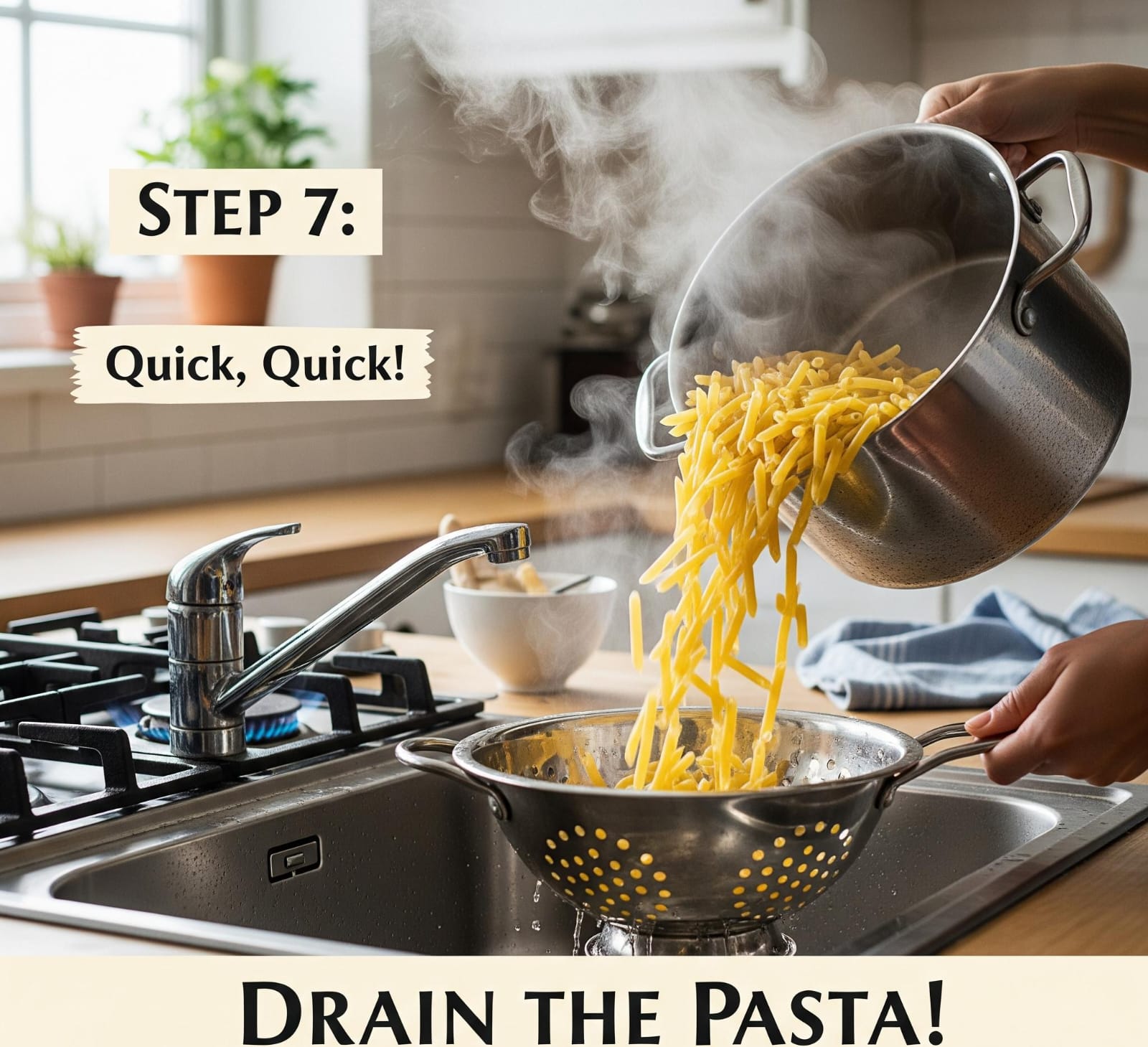
Step 8: Marry the Pasta and Sauce! The Grand Finale.
This is it. The best part. Elevates your dish.
- Combine Immediately:
- Drained pasta. Straight into hot sauce. In the pan. Or a big bowl.
- Toss, Toss, Toss! Tongs. Big spoon. Toss for 1-2 minutes. Over low heat (if in a pan).
- Why? Pasta soaks up flavors. Sauce clings. Becomes one delicious team. Add saved pasta water if needed.
- Serve Right Away! Pasta cools fast. Eat it fresh. Enjoy!
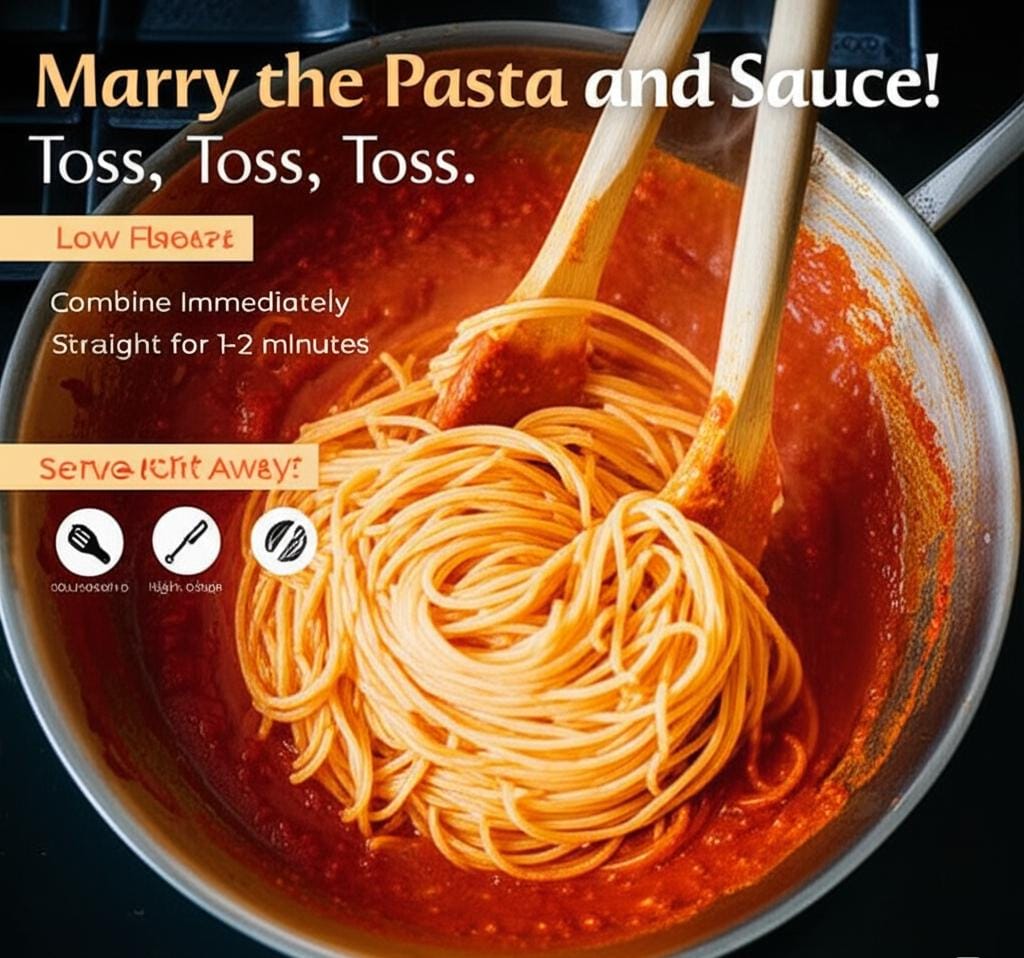
Section 4: Common Pasta Problems and Easy Solutions
Mistakes happen. Even to the pros. But most pasta problems? Easy to fix.
Problem: My Pasta is Sticking Together!
Fix: Not enough water. The pot is too small. Didn’t stir enough at the start. Next time: bigger pot, more water, stir!
Problem: My Pasta is Mushy and Limp!
Fix: Overcooked! Start testing for “al dente” earlier. Trust your bite.
Problem: My Pasta Tastes Bland!
Fix: Not enough salt in water. Remember: the ocean is salty!
Problem: My Sauce Slides Right Off the Pasta!
Fix: You rinsed it. Or didn’t save pasta water. Don’t rinse for hot dishes! And use that starchy water. It’s magic.
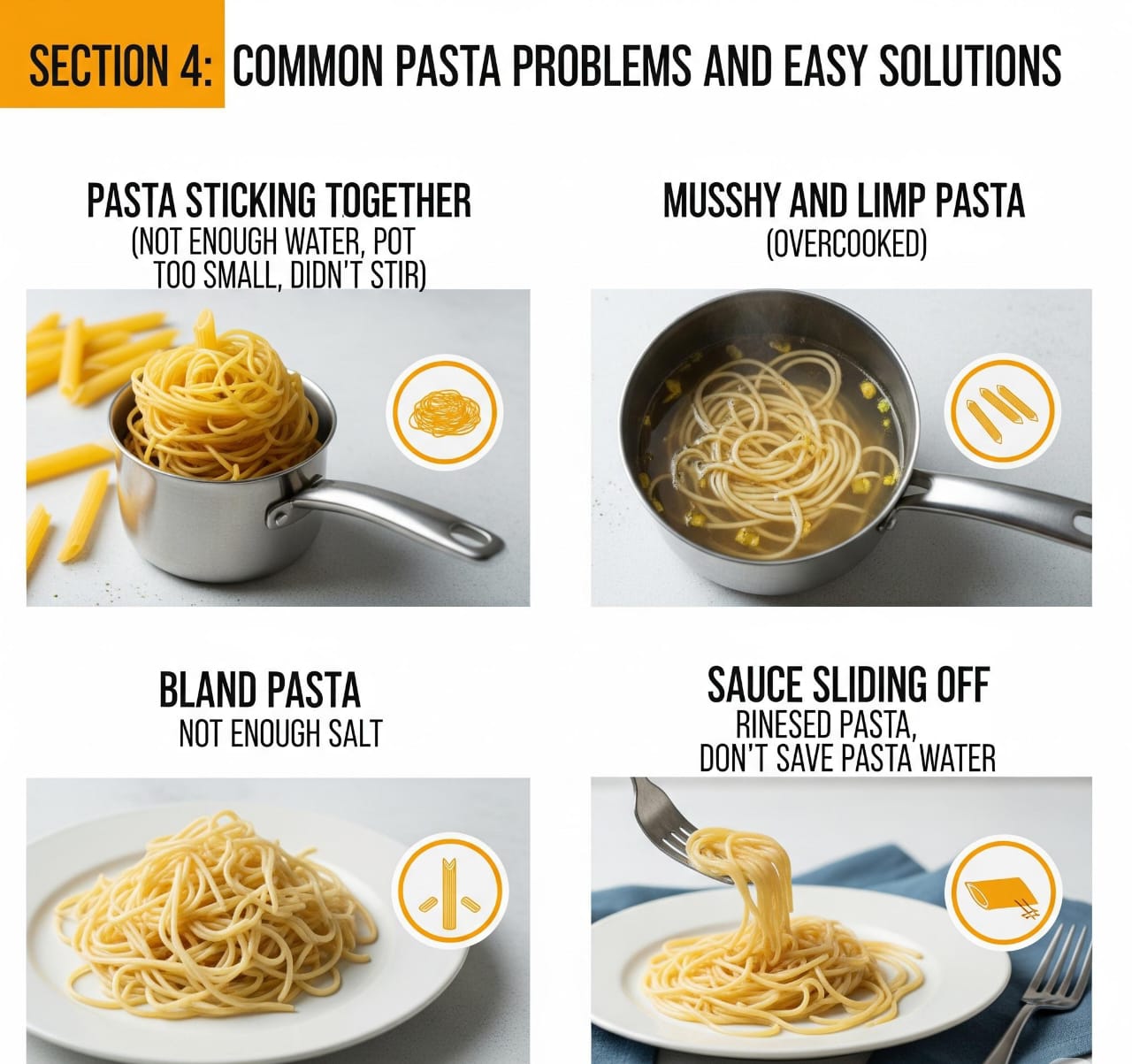
Conclusion: You’re a Pasta Pro Now!
Amazing! You’ve just mastered how to cook pasta like a true expert. From choosing your pot and salting your water to the “al dente” bite and the secret of pasta water, you now have all the knowledge. You’ll make delicious pasta every single time.
Cooking is about practice. And fun! Don’t be scared to try new shapes. New sauces. Every time you boil that pot, you’re not just making food. You’re creating comfort. Flavor. Maybe even new memories.
So, go forth! Cook with confidence! That perfect bowl of pasta? It’s waiting for you. Get ready to twirl, savor, and enjoy!
